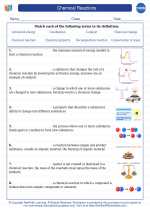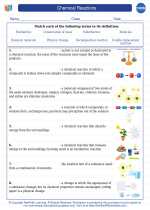Methane
Methane is a chemical compound with the molecular formula CH4. It is the simplest alkane and the main component of natural gas. Methane is a colorless, odorless gas that is abundant in nature and has a variety of industrial and environmental applications.
Structure and Properties
The molecule of methane consists of a central carbon atom bonded to four hydrogen atoms in a tetrahedral arrangement. The carbon-hydrogen bonds are covalent, and the molecule is non-polar. Methane is a highly flammable gas and burns in the presence of oxygen to produce carbon dioxide and water.
Occurrence
Methane is found in natural gas deposits, coal mines, and as a byproduct of organic processes such as digestion in ruminant animals and anaerobic decomposition of organic matter in swamps and marshes. It is also released during the extraction and transport of fossil fuels.
Uses
As a clean-burning fuel, methane is used for heating, cooking, and electricity generation. It is also a feedstock for the production of hydrogen and synthesis gas, which are important industrial chemicals. Methane can be converted to methanol, a versatile precursor for various chemical products. Additionally, methane is being explored as a potential energy source for fuel cells and as a renewable energy alternative to fossil fuels.
Environmental Impact
While methane is a valuable energy resource, it is also a potent greenhouse gas. Its release into the atmosphere contributes to global warming and climate change. Efforts are underway to capture and utilize methane emissions from landfills, livestock operations, and industrial processes to mitigate its environmental impact.
Study Guide
- What is the molecular formula of methane?
- Describe the structure of a methane molecule.
- What are the main sources of methane in the environment?
- What are the uses of methane as a chemical compound?
- Explain the environmental impact of methane and efforts to mitigate it.
[Methane] Related Worksheets and Study Guides:
.◂Chemistry Worksheets and Study Guides High School. Chemical Reactions

 Worksheet/Answer key
Worksheet/Answer key
 Worksheet/Answer key
Worksheet/Answer key
 Worksheet/Answer key
Worksheet/Answer key
 Worksheet/Answer key
Worksheet/Answer key
 Worksheet/Answer key
Worksheet/Answer key
 Vocabulary/Answer key
Vocabulary/Answer key
 Vocabulary/Answer key
Vocabulary/Answer key
 Vocabulary/Answer key
Vocabulary/Answer key
